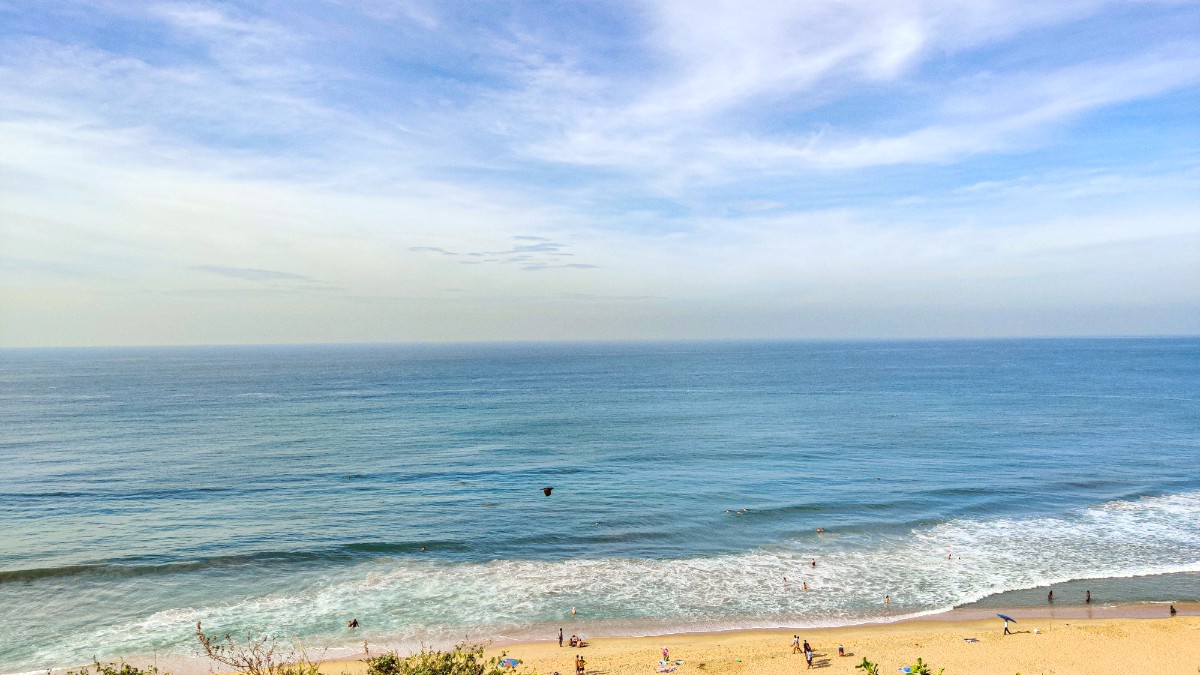
Kerala, India
Papanasam Beach and North Cliff: Papanasam Beach carries spiritual weight for Hindus; they believe dipping in its waters removes misdeeds. The North Cliff is a striking red laterite formation directly from the Arabian Sea, special to this Kerala region.
The promenade is pedestrian-only, giving stunning sea views. The cliffs are unique to this part of Kerala.
This site highlights centuries of spiritual tradition in Kerala.
Varkala itself does not hold major museums or large-scale cultural institutions.
For extensive museum visits, a day trip to Trivandrum (Thiruvananthapuram), the state capital, is advised.
In Trivandrum, you can visit the Napier Museum, a natural history and art museum.
Also in Trivandrum, the Sri Chitra Art Gallery houses a collection of Indian paintings. These dive deep into Kerala's art and past.
These institutions offer a cultural immersion into Kerala's heritage.
Varkala and its immediate surroundings present a few historical sites that connect visitors to the region's past.
This small but picturesque 17th-century fort was a significant trading post and military base for the British East India Company. Its coastal spot was important for trade and defense.
The fort is open daily, typically from 9:00 AM to 5:00 PM. A small entry fee applies. It sits about 12 kilometers south of Varkala, easy to reach by auto-rickshaw.
The fort is modest, but its seaside setting offers scenic views, making it a good spot for photography and a peaceful half-day visit. Combine a visit to the lighthouse with the nearby Anjengo Fort.
A significant pilgrimage site and ashram, founded by Sri Narayana Guru (1856–1928), a respected social reformer and philosopher from Kerala. The Mutt is a memorial to his life and teachings, which championed universal brotherhood and social equality.
The Mutt is open daily; no entry fee. Dress modestly. Located a few kilometers inland from Varkala Cliff, reached by auto-rickshaw.
This site has a calm mood and offers knowledge about a figure in Kerala's social past. It becomes very active during the annual Sivagiri Pilgrimage (December 30 - January 1).
An ancient Vishnu temple, a pilgrimage site for Hindus with strict dress code rules.
A picturesque 17th-century British East India Company trading post and military base.
Built by the British in the 17th century, offering panoramic coastal views.
This is a prominent pilgrimage center and ashram, founded by Sri Narayana Guru (1856–1928), a revered social reformer and philosopher from Kerala. The Mutt is a memorial to his life and teachings, which championed universal brotherhood and social equality.
Varkala's natural charm extends beyond its main beach to include quieter coastal areas and unique geographical features.
The main beach, good for swimming and sunbathing when conditions are calm. It holds spiritual importance.
North of Varkala. Kappil is known for its estuary where Kappil Lake meets the Arabian Sea, separated by a thin road.
This unique meeting of fresh and saltwater creates a beautiful view. Free access. It's a fine place for quiet walks, photos, and a more private beach experience away from the tourist groups.
A calmer, less crowded beach just north of the North Cliff. A good choice for those wanting more peace than Papanasam Beach.
Even further north than Odayam, Chilakur Beach remains very secluded and untouched. A pristine coastal scene for those traveling a bit further.
Visit at sunset for especially breathtaking views. Hiring an auto-rickshaw for a round trip lets you explore these areas at your own pace.
Edava Beach and Kappil Beach offer a tranquil choice to Papanasam, away from the main tourist crowds.
Kappil is known for its stunning estuary where Kappil Lake meets the Arabian Sea, separated by a thin road. This unusual mix of fresh and saltwater creates a beautiful setting.
Located near the historic Anjengo Fort, this lighthouse was built by the British East India Company in the 17th century. It served as a navigational aid during the colonial era and now offers panoramic views of the coastline.
For travelers exploring beyond popular spots, Varkala has a few lesser-known attractions.
Wear comfortable shoes for walking on the Cliff. Carry water, especially on sunny days. Sunscreen and hats are advisable.
Always respect local customs at religious sites. Photography rules may apply.
Varkala Town offers a distinct experience from the main tourist cliff, with its authentic local markets and daily life.
Situated a few kilometers inland from the Cliff, Varkala Town is the local commercial center. It gives a more authentic local experience with traditional markets, local eateries, and everyday services.
While convenient for transportation, Varkala Town does not have direct beach access and requires local transport to reach the Cliff and beaches.
Some resorts and guesthouses are located directly at the base of the Cliff, on or very close to Papanasam Beach.
This area offers ultimate beach proximity for early risers.
This area is part of the North Cliff, specifically near the main access point where auto-rickshaws and taxis drop off passengers.
A practical entry and exit point for the Cliff area.
Located to the south of the main Papanasam Beach, this area is quieter and less developed than the North Cliff. It features more secluded guesthouses and a generally more peaceful atmosphere, still offering ocean views.
A serene retreat from the bustling North Cliff.
Spiritually important, main bathing and sunbathing area.
Unique geological feature, popular for shops, cafes, and views.
Ancient Vishnu temple, significant pilgrimage site, strict dress code.